Sciatica Exercises: The 4 Best Exercises
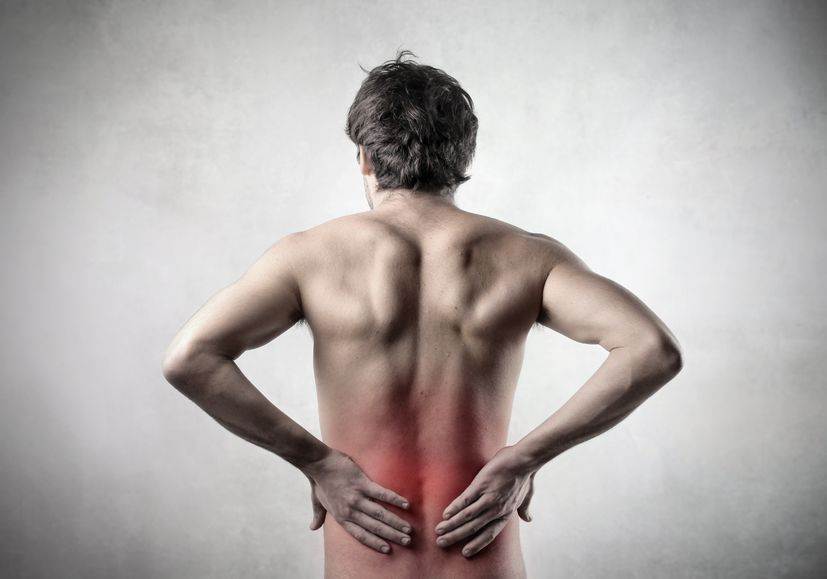
Discover the Best Sciatica Exercises for Pain Relief and Recovery
Persistent sciatica pain can transform daily activities into daunting tasks, leaving you searching for relief. If you’re on the hunt for effective strategies to alleviate sciatica and bolster your rehabilitation, welcome to your comprehensive guide. Here, we delve into not only the treatment options but also spotlight sciatica exercises that are crucial for pain relief and recovery. These exercises, when integrated with the professional care from your chiropractor or physiotherapist, are designed to reduce sciatica symptoms significantly.
Why Focus on Sciatica Exercises?
Exercises specifically tailored for sciatica play a pivotal role in managing and reducing pain. They are essential for strengthening the muscles supporting your spine, improving flexibility, and promoting healthy circulation to the affected nerve regions. This guide is your go-to resource for understanding how targeted exercises can complement medical treatments and accelerate your journey to relief and rehabilitation.
Understanding Sciatica: Sciatica Exercises
Sciatica is often described as a painful sensation that originates in the lower back or buttock, extending down through the thigh and leg, and occasionally reaching the foot. This discomfort results from the compression or irritation of the sciatic nerve. However, the root cause of this pinching can vary, necessitating precise diagnosis and tailored treatment plans.
The Complexity of Sciatica Causes: Sciatica Exercises
Identifying the exact source of sciatica is crucial, as nerve compression can occur at multiple points along its path. Misdiagnosis or oversimplification of your condition as merely “sciatica” without further investigation can lead to ineffective treatment strategies. It’s essential to understand whether the pain stems from issues like disc herniation, degenerative disc disease, or another underlying cause to ensure the appropriate therapeutic approach is employed.
See Also: Best Toronto Chiropractor: How To Find The Best Chiropractor In Your City
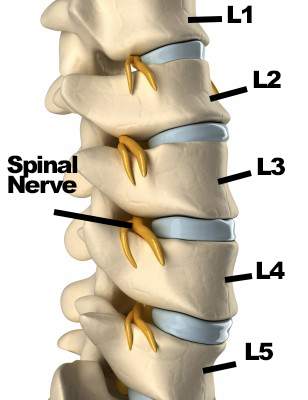
L4 and L5: Sciatica Exercises
So how do I know where my pinched nerve is? Two nerves come out between the last two vertebrae in your body. Your nerve is very commonly pinched here.
Your lower back vertebrae are called lumbar vertebrae. There are 5 vertebrae in the lower back. Taking the “L” for the lumbar spine, they are named L1, L2, L3, L4, and L5. The last two vertebrae in your lower back are L4 and L5.
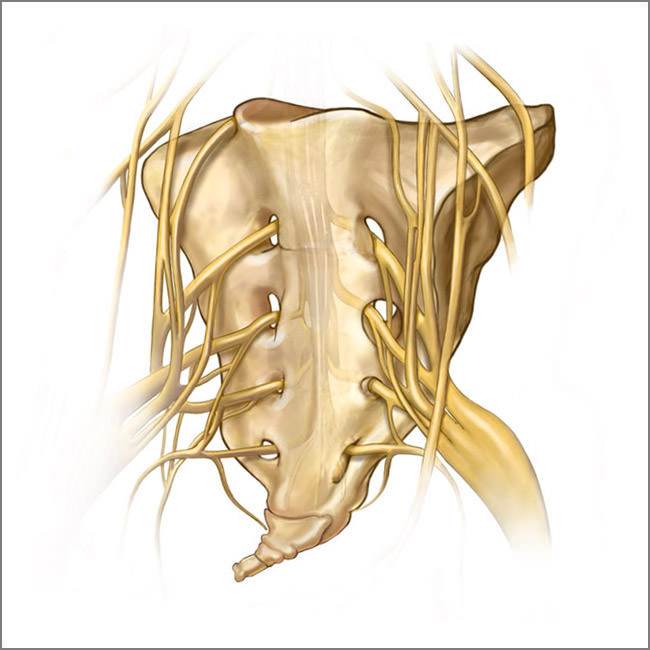
Ion medical designs http://www.ionmedicaldesigns.com/ion_site/two_dimensional_artwork.html
Just below L5 is one of your pelvic bones. It’s called the sacrum. The sacrum has holes with yellow-coloured nerves coming out.
S1, S2, S3: Sciatica Exercises
The nerves are called S1, S2 and S3. “S” is for sacrum. These nerves are rarely pinched.
Your sciatic nerve is formed when the nerves from L4 L5 and L5 S1 join together with the S1, S2 and S3 nerves in your buttock.
So, most of you will have your nerve pinched in one of three spots.
- In the buttock the Sciatic Nerve starts, in other words where the S1, S2, and S3 nerves join the two other nerves that come out between L4, L5 and L5 S1.
- Between L4 and L5 vertebrae
- Between L5 and S1 vertebrae
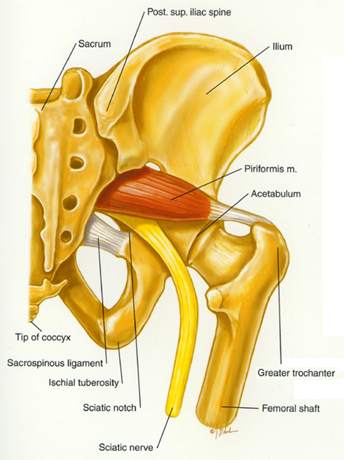
Now you know where the nerve can be pinched but it doesn’t answer why one of the nerves is pinched causing your sciatica
The Usual Suspects (Causes) of Sciatica
Most people’s sciatica is from:
- Herniated Disc at L45 or Herniated Disc at L5S1 (some osteoarthritis = “wear and tear” is involved)
- Degenerative Disc Disease (Osteoarthritis of the Disc=”Wear and Tear” of the Disc)
- Stenosis (Basically advanced osteoarthritis)
- Spondylolisthesis (A fracture of the vertebra or Osteoarthritis with the vertebra moving forward)
- Piriformis Syndrome
These are the diagnoses that your doctor or chiropractor should be telling you about not sciatica.
Remember sciatica only says that you have a pinched sciatic nerve causing pain in your buttock and leg, sciatica doesn’t tell you the cause of your pain. Without determining the cause you will get hit-or-miss treatments from your chiropractor or physiotherapist as they can’t give you specific treatment.
See Also: MRI CT scans X-rays, What’s Best For My Pain
The key exam that you need to determine what the heck is causing your pain is a neurological examination. You have probably seen it on TV before.
- Reflex tests with a reflex hammer on your knee and the back of your ankle
- Muscle Strength Testing: Resisted muscle testing of your foot. You try and push up/down while the chiropractor holds your foot. An alternative is heel walking and walking on your toes.
- Light Touch and Sharp Dull Testing: A light touch directly on the unclothed legs and feet to determine if you are unequal in your sensitivity to light touch and sharp/dull testing. A light touch is often enough as a screening.
Also, remember that the diagnosis should pretty much be determined in the office and X-rays, MRI, and CT scans done only if there are signs of something else or the diagnosis is kind of fuzzy.
See Also: Herniated Disc Part 2: The Best Exercises For Your Herniated Disc
Herniated Disc: Sciatica Exercises
You herniate a disc from the everyday habits that you have. The everyday habits of slouching and bending with a rounded low back, build up to weaken and damage the disc to the point it is ready to break open and herniate.
The problem is there is no pain. You don’t feel sciatica until the disc has herniated as there are no nerves inside the disc. So you continue your habits and think you don’t have a bad back until one day you lift your daughter off the floor.
The only problem is you had a bad back with no symptoms for a very long time. This is just like a car with a little bit of rust showing but if you take the car apart you see a lot more rust.
Degenerative Disc Disease – Osteoarthritis of the Disc
Degenerative Disc Disease is a continuation of the breakdown of the disc that was started by bad lifting and slouching habits.
The disc becomes smaller, and brittle like an old elastic band that is decaying, leading to the disc becoming smaller in height. The smaller disc makes the space between the vertebrae smaller. Thus, your nerve doesn’t have much room, so your nerve gets pinched between L4 and L5 or L5 and S1.
Stenosis- Most commonly from continuation of Osteoarthritis
Stenosis is a “narrowing”. There are two types of stenosis
- Lateral Stenosis
- Spinal Stenosis
1. Lateral Stenosis is the narrowing of the hole which the nerves from the spinal cord come from. Does this sound familiar? It’s degenerative disc disease + the bone degenerating forming spurs that narrow the hole for the nerve. A smaller hole for your nerve eventually means a pinched nerve.
2. Spinal Stenosis is the narrowing of the canal where the spinal cord sits. This is essentially pinching of the spinal cord usually in the lower back.
Spondylolisthesis (Vertebebra moving forward)
Spondylolisthesis is usually the moving forward of the vertebra (sometimes backwards). When the vertebra moves forward the spinal cord and nerves are pulled putting tension on your nerve. Nerves under tension get irritated and so turn into sciatica. This can happen from a fracture to the vertebrae or osteoarthritis.
Piriformis Syndrome
Most people’s sciatic nerve usually goes over or under the piriformis muscle. In some cases, possibly yours, the sciatic nerve goes right through the piriformis muscle. When the muscle tightens up it squeezes on the sciatic nerve causing sciatica.
Walking like a “man” is another reason for sciatica. That’s right, when you walk bow-legged with your feet turned can give you trouble later.
Chances are, if you are reading this you already have a problem with sciatica. When you turn your feet out this makes the piriformis muscles work harder.
The harder your piriformis works the more likely the nerve will be pinched causing sciatica.
The 4 Best Exercises For Sciatica
While treatments are different for sciatica depending on the cause you can still help your chiropractor or physiotherapist by doing your home exercises.
1. Flossing: first introduced by Michael Shacklock
Flossing is good for your teeth but a different kind of flossing is good for your spine and spinal hygiene.
First, determine if you can floss safely:
- Sit on a chair or relatively hard surface. Please don’t sit on the couch, it is too soft and will aggravate your lower back.
- Raise your painful leg to the point of pain and keep it there.
- Bend your neck forward till your pain is aggravated from above
- Lower the leg till the pain decreases.
If the pain decreases you are safe to do flossing.
Warning: This exercise can cause acute sciatica but chances are minimized by doing the screening exercise. Don’t floss until you have been out of bed for at least 2 hours. Now The Flossing:
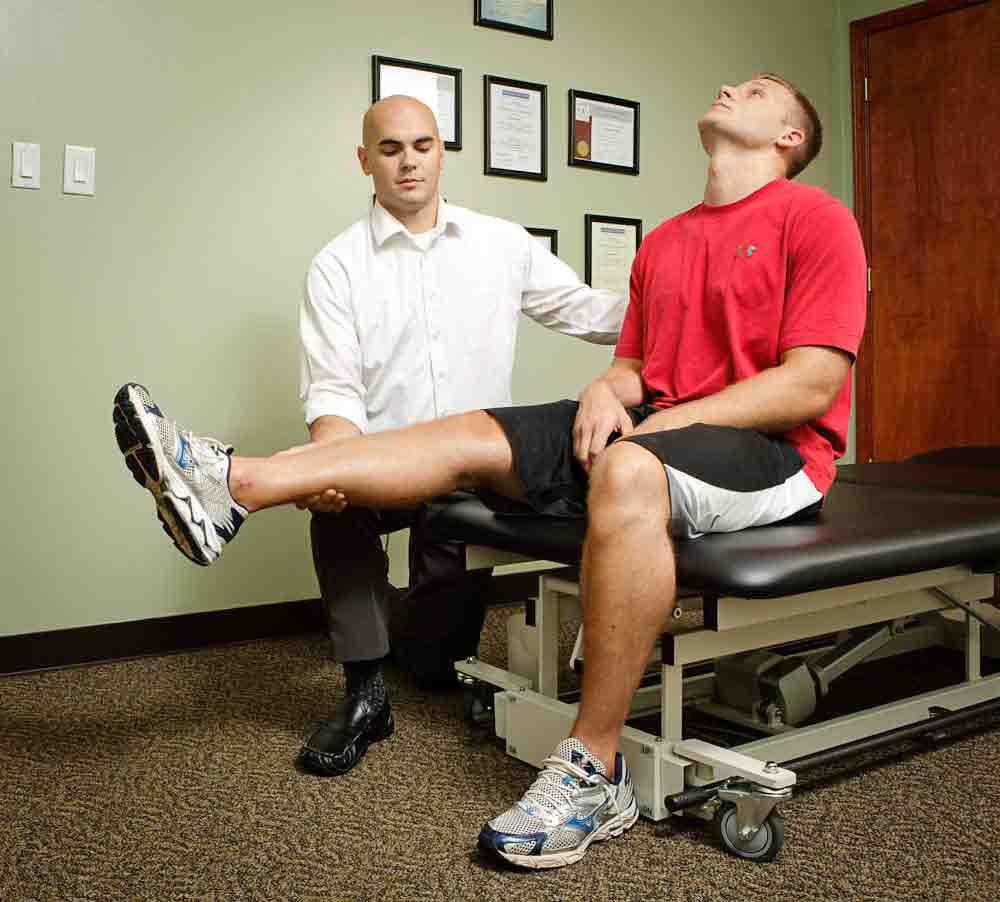
- Sit down in a chair with your legs swinging freely
- Bend your neck forward for 5 seconds (if this doesn’t cause sciatica you can do the next step)
- Bend your neck backwards as far as possible and straighten the knee (5 seconds)
- Repeat 3 sets of 10X on each leg. You can do this for up to 5/day.
2. Piriformis Stretch A) Sitting and B) Lying Face-Up
A: Sitting:
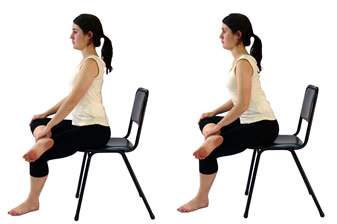
- Sit in a chair and cross the bad leg over the good
- Keep the arch in your back and move your chest forward
- Repeat 3 sets 30 secs. This can be done several times a day
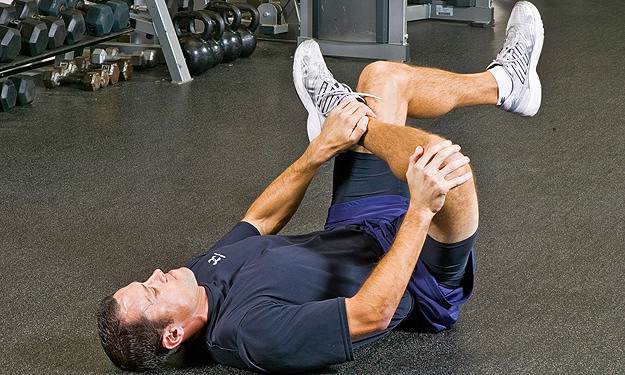
B: Lying Face-up: This exercise might be easier for some of you.
- Lying Face-up both knees bent. Put the bad leg over the good.
- Bring the good leg up to support the bad leg.
- Push the bad leg outward.
3. Ball Exercises: Piriformis, Gluteus Maximus, Gluteus Medius
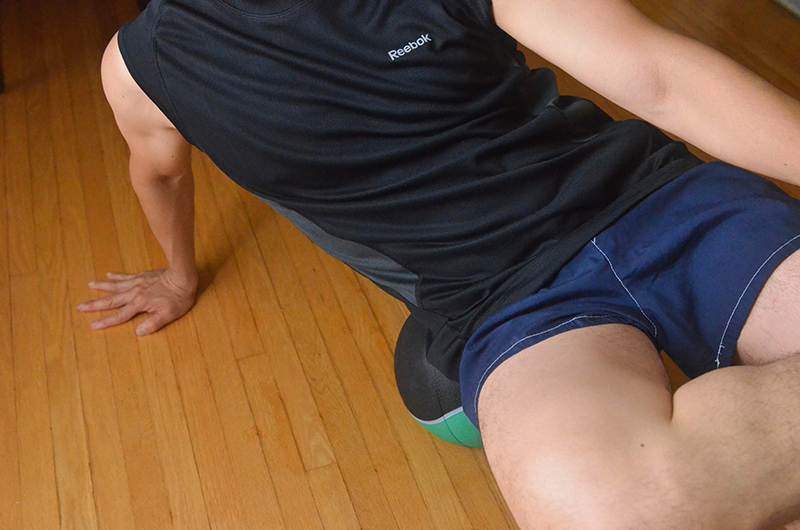
Piriformis
- Cross your bad side leg over the other knee
- Get a tennis ball, basketball or a medicine ball and sit on it with your buttock.
- To treat the piriformis go lean at about a 45-degree angle.
- Stop at each tender point and hold until each one is ironed out or feels less tender.
Gluteus Maximus
- Same as the piriformis except that you don’t need to cross the bad over the good.
Gluteus Medius
- Same as Gluteus Maximus except that you now lean at almost a 90-degree angle -You are almost on your side with a focus on the side area just below the belt or hip bone
4. Cobra
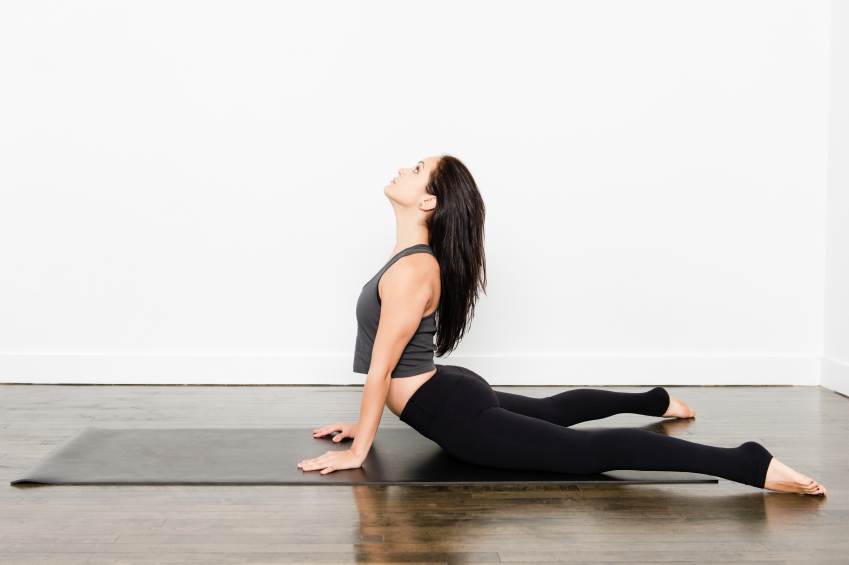
- Lie down face down with your hands underneath your shoulders.
- Push up from as high as you can until your lower back stops you or your elbows are straight.
- The pelvis should still be on the floor and the lower back muscles relaxed.
- Do these exercises hold each time for 1-2 seconds 6-8 times per set? This exercise can be repeated every two hours throughout the day.
If your pain is from a disc herniation you can combine the disc herniations part 2 exercises with these exercises. If your sciatica is from a different cause I will write about all the conditions that cause sciatica over time.
Write in the comments to tell us how you are doing with your sciatica. Also, let us know your vote for the best Toronto Chiropractor below. Connect with me on LinkedIn.


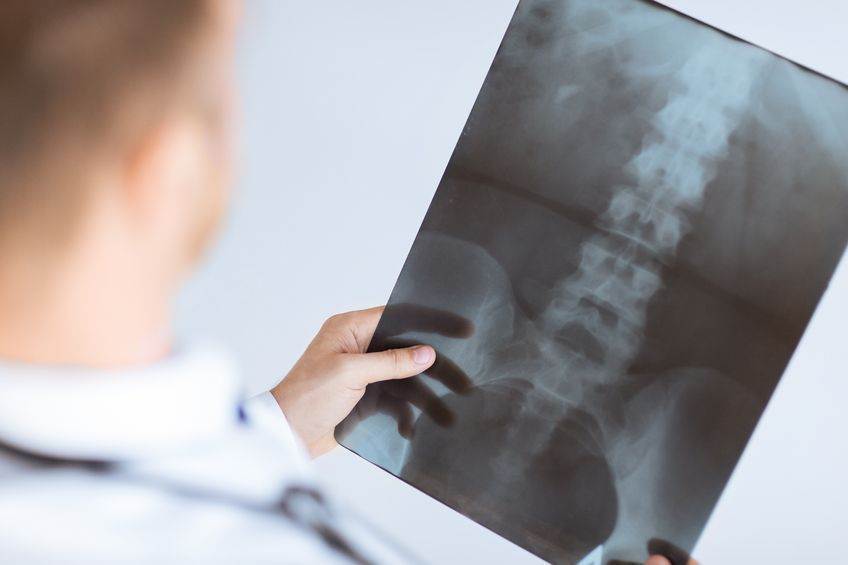
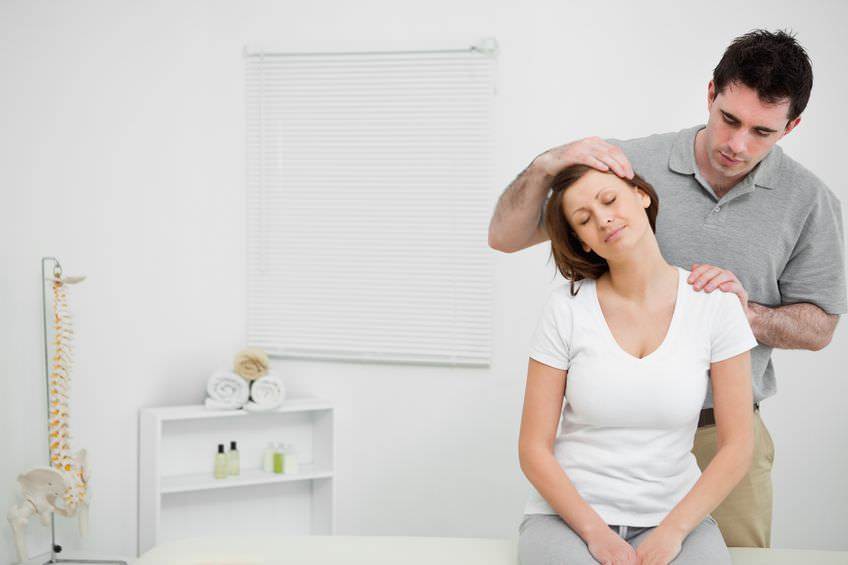
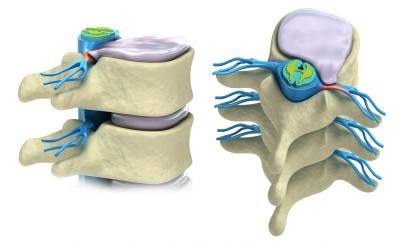
Thnks sir, sir actually now my pain is normal its not so high sir actually my profession is running so now this stage running is good for me or bad and what will be chance for me in running….
Author
Thanks for your question Pardeep. You need to be able to walk and stand first. Once you can do that try short jogs. Than you can get back to running.
Hope that helps.
Are there any videos to further depict how the exercises should be performed? I’m asking because I have a pinched nerve along the it band and also going straight down my butt cheek. It starts behind the hip joint (Right side) and then down the length of my IT band. I also feel a pinch under my cheek more towards the center of my butt. So, that’s two areas I’m feeling the pain. Thank you
Author
Thanks for your comment Shannan. The exercise in this article will help you with the butt cheek pain but won’t help you with the “pinched nerve” along the IT band. It’s not likely that you have two pinched nerves at once. While anything is possible, it is more likely that you have flat feet or a right foot that is flattening out more which causes your leg to turn in and the thigh to turn in causing the IT band to be stretched. Very common.
No I don’t have a video. I am sure you can find one if you look it up on You tube.
Hope that helps your sciatica and IT band.
Thank you. I was told there are several nerves along the spine and that there is a nerve that can get irritated from a disk bulge and that it runs along the gluteus medius, down the side of the thigh and the side of the calf. Maybe this chiropractor doesn’t know what he’s talking about than. Thanks doc.
Hllo, Dr ken
I m Pardeep nd 25 year old I m suffering from disc buldge L4-L5\S1 last 7 month sir I want to know that how much time will be this I mean to say that is it life time injury sir plz tell mee that I will continue these exercise so how much time will take be good….sir plz help me….
Author
Thanks for your question Pardeep. Yes you can get lower back pain again from time to time for most people. Try these exercises to stabilize your lower back. If you keep doing them you will have less chance of getting lower back pain. It doesn’t mean you won’t have pain, but you will decrease the chances.
Hope that helps.
Thank you Dr. Ken, I will check this link out immediately. My MRI results were as follows:
1. Slight retrolisthesis of L4 on S1 by approx. 3mm
2. Posterior disc buldge at L3-4 and L4-S1 without central canal stenosis
3. Facet and ligamentum flavum hypertrophy with mild narrowing of neural foramina at L3-4 and L4-S1.
I also had an EMG done with 2+ on paraspinals (PSW, FIBS) and 1+ on the right gastrocnemius.
I am grateful these tests should have out ruled disease causes as blood work was good as well. However; I’m nervous as I’m only 27 wanting to start a family and have tight hips that can’t get much more flexible from Congenital Hip Dysplasia. My physio thinks cobra is bad for me because of the spondy. Can I still have improvement if I get low back pain sitting and sciatica pain standing? Thank you very much for your website.
Hi,
I have two buldging discs between L4-L5 and L5-S1 and was also told I have retrolisthesis (Somewhere between L4-S1). Should I still use these exercises for retrolisthesis?
Also, my feet and calves hurt in a bad achey way from standing. It doesn’t take much standing at all. Within ten minutes they begin to ache badly, but it’s feet up to calves, not butt down to feet. They ache so badly like I’ve played a 4 hour college tennis match, even though I’ve done barely anything. Walking doesn’t hurt this way. Is this somehow related, or do you think that it is different (a problem with the feet requiring orthotics, etc)?
Author
Thanks for your question Lindsay. The way to tell if the lower back is causing the problem is if you bend, twist, etc… while standing and the pain in your feet gets worse than it is likely to be your lower back. Try it out.
If it is related to your lower back. You should try these stabilization exercises for the retrolisthesis and bulges in your disc. https://www.bodiempowerment.com/part-2-degenerative-disc-disease-exercises-help-lower-back-pain-spondylosis/
If any symptoms get worse the exercises are not for you. Remember any exercise can make you wrose.
Hope that helps.
Do you have exercises to help with hip arthritis, I stll have my cartilage at this point? Thank you
Author
Thanks for your question. Sorry I don’t have any but here is a video from You Tube. They are kind of dry but should do the trick.
Hope that helps.
Please doctor, is it advisable for someone with sponylisthesis to work out or engage in bodybuilding? If so, what type of weightlifting should be encouraged and which avoided? Also what of other exercises like jogging, press-ups, etc. I would love your answer to be as practical as possible. Thanks a lot.
What if I do the nerve flossing with the leg raised and looking down? Is that ok? It seems to cause a lot of discomfort in my right glute. I feel as though it’s piriformis, does this sound right? Am I okay to continue running with this type of injury?
Scott
Author
Thanks for your question Scott. You should do the nerve flossing as I have described it in the article above. Neck flexion then neck extension and leg raise. You should not run with this type of injury.
Hope that helps your sciatica.
Hi Dr. Ken,
I’m a 48 yr old male in great athletic condition but suffered my second herniated disc 6 days ago(2nd one not diagnosed yet but feels a little different as pain is in buttocks area). I think it is more due to piriformis syndrome because I was into day 6 of my 50 squats a day routine to tighten the glutes.The pain came suddenly a day after I played a few sets of tennis. I’ve done this before and other exercise and no problem..The only thing different is the squats. I remember from my 1st sciatica herniated disc L5 that is fro an advanced yoga pose.
Like another person here, the cobra pose does not help alleviate pain. The pain is the same n 6th day as first day. I cannot do any of the exercises you recommended here or what my previous PT had me doing..In fact, I have always done the exercises daily in the morning so I am puzzled why it came back. what can I do now if pain is so strong that it takes me 10 minutes to pu ton socks and I cannot tie my own shoes. BTW, this happened while traveling. I have to drive back to Texas from California very soon.. again it is left upper buttock and it radiates down the leg…hard to sit, walk…..except for standing..
Author
Thanks for your question Frank. Disc herniations don’t discriminate between athletes and sedentary people. In fact many athletes do lots of sit-up, cruches, squats (with heavy weights), dead lifts and power cleans that set them up for a herniated disc. Not sure is you are doing squats on a squat rack or just simply squating without weights.
You can try knee to chest exercises as it opens up the space between the vertebrae for the nerve to pass through. However this may make you worse. This is a warning.
You should bring the knee to the chest repeatedly 10 X. If during that time the pain is getting worse or any symptoms go further down the leg than you should stop.
Hope that helps your possible disc herniation.
Hi Dr,I want to discuss with you about my mom,she is siatica patient for more than 30 years,when she was young.But due to wrong diagnosis and treatment she has been completely bent,her body has been shrunk now,she is in miserable condition,but now pain situation has been changed,now light pains in whole body,her left leg has become weak and nerves are also weak,she cannot walk easily with bent body,can you suggest something for my mom,plz help us.
Author
Thanks for your question Hafsa. You mom’s condition should be looked at by someone in person. There is no diagnosis and there are too many things going to give you any exercises. She needs someone to look at her and prioritize what is the most important and tackle that problem. Giving a few exercises will not help her when the whole body is involved.
You should seek professional care in person.
All the exercises helped, except the Cobra. This aggravated my condition. The arch in the back was too severe. Likewise, if I do another pose, a full Pigeon (chest to floor), my condition is also aggravated.
Two questions:
1. Do other people find that they can tolerate some poses, but not to the full extent?
2. How best to sit? Sometimes a small wedge helps, sometimes a larger wedge seems to make my lumbar curve to severe, which increases aching in my back. Any suggestions? .
Author
Thanks for your questions Lanne.
1. People are all different and even if they have the exact same disc herniation that goes out on the left side they will have a different perception of how bad they are. One can work while the other cannot. That is normal. Also the Cobra like exercise (please don’t do it the Yoga way -do it the way it is described) should be done till you touch the pain. I am saying go up to the point you feel pain. Next time go slightly lower than that. Then you will not feel worse.
2. you should sit with small wedge or a rolled up towel to start. Eventually you will be able to use a larger wedge doing the “cobra” exercises more.
Hope that helps your sciatica.
On 15 Apr 2015 09:48, wrote:
Sir,
I really appreciate that you are helping people in distress, l am so sorry that I didn’t see your site earlier. About 8 years ago(at 30 yes) I started to develop electric shock like sensation while sneezing bending and sudden movements. After 2 months of rest with muscle relaxants and some exercise I became normal. In between it had reappeared 8- 10 times and I have recovered.
I came to know about your website when I was on the bed with extreme pain recently. After a few days of physiotherapy I started to do the prone and McKenzie, standing extension, cat cow, curl, bird dog squat and some more extension exercises like lying on the stomach and raising legs and hands and holding for 30 minutes. This made me fell lot better and stronger. But when mostly I wake up in the morning I feel like numbness from my buttok to the toe. After some time there was a cracking noise coming from my lumbar spine but no pain. I avoided sitting in the floor when at church but when I tried i felt the shocking sensation again and again but this time without spasm. The reason I believe that my back is much stronger. So I went to neurosurgeon who examined me like you have mentioned and took some x ray’s. He then confirmed that I have listhesis L4-5 with sacrilization. His advise was to forget about the pain and not to worry about it. Physiotherapy consultant told me to do flexion hamstring stretches only not extension.
Sir I am really confused is the diagnosis correct is it retrolisthesis or spondylolisthesis? . At my school days I occasionally jumped from height’s. What should I do flexion or extension or would you recommend MRI (bit more expensive)
I have diabetes and taking metformin daily. Please look at the x rays and give me some advise.
With Regards
Rinu Sebastian
Author
Thanks for your question Rinu. Retrolistthesis is movement of one of your vertebrae moving backwards over another while spondylolisthesis is forward movement of your vertebrae over another. You should ask your neurosurgeon as they have the imaging report ie. X-ray or CAT scan. It will plainly say on this report.
I can’t tell you what exercise as you don’t know what the X-ray said yourself.
Hope that gives you a direction for your sciatica.
Hi dr ken ,i m 24 year old ,I’ve got a herinated disc between L4 and L5,my doctor advised bed rest and back exercise i m doing these 42 day i feel better 70 % before, but lightly pain right buttock ,plz tell me sir some advise.
Author
Thanks for your question Gopal. First your doctor is very outdated. He is at least 30 years out of date. All the research from at least 30 years shows that bed rest is more harmful than movement. In the most severe cases you can do bed rest for 48 -72 hours but only in the most severe cases. Unless I am misreading what you wrote, it looks like you have been in bed for 42 days with the exception of the exercises.
First you need to stop aggravating your problem by reading this article. https://www.bodiempowerment.com/disc-herniation-part-1/
Than you need to do these exercises. https://www.bodiempowerment.com/herniated-disc-part-2-the-best-exercises-for-your-herniated-disc/
If the exercises give you increased pain or increased symptoms further down the buttock or leg than you need to stop.
Hope that helps your herniated disc.
Thanx alot doc. Feel much better now. Hoping fr all to be positive 🙂
Author
You are welcome Divi.
These exercises give me much relieve.. I thank you doc… I am doing these exercises regularly…. May god bless you… Noman from Pakistan k
Author
You are Welcome Noman from Pakistan.
Is planning for a child safe in this situation ?
Author
Thanks for your question Divi. It will probably make your disc better as your pregnancy continues. Your back will still give you back pain though. That’s what most likely not what is going to happen.
Hope that helps.
thank u soo much for ur answer doctor. I’m actually planning for a baby … so I want to know is it ok and will I be able to manage and can u have a normal one ?.
And I also want to know the disc will always remain like ths ? It will never go back to its original place .
Back disc l4 l5 compressed moderately to l5 nerve root & l5 s1 mildly intending calsac s1 nerveroot. DI’d physiotherapy . 80 percent better. I’m 24 year old F. Can this 100 percent be cured? And once cured does this come back ? Do I need to worry
Author
Thanks for your questions. If you are 80% better than I don’t think you need to worry. When you say cured that depends. Cured for most people means no pain. If that’s what you mean then most people will be cured. I can’t speak for you as I haven’t examined you. With you being 80% better the chances are good though. That doesn’t mean the disc is not damaged still. Your pain will go away when you put the disc back in further but the disc will remain the way it is. This means that the disc herniation and pain will come back.
The pain usually comes back as we all bend forward for most things in life. We bend forward to pick up things, tie our shoes, put on socks, put on trousers and to get pots from the cupboard. You even sit which is bending forward which puts more pressure on the disc. It can be a month, two months or a year or even a few years. Research has proven this. There is research that says back pain lasts 6 weeks and goes away. These research papers did not look over the long term.
Basically back pain especially disc problems are recurrent.
Hope that helps answer your questions.
Hi Dr. Ken. I’m 31, I just found out today I have degenerative disc disease at L5-S1, and central and right paracentral disc herniation at L5-S1 which comes in contact with the right S1 nerve root. The disc extends slightly inferiorly and into the neural foramen of S1 on the right side. My right calf is weak and the right side of my foot is numb and has been for weeks now. I am waiting for a consultation with a back surgeon but that might take up to 1 year to book. I don’t plan on opting for surgery.
What are your thoughts on exercising (weight training, playing sports) when the symptoms of pinched nerve are present? I have no pain anymore and feel like I could do upper body exercises at minimum.
Thanks!
Author
Thanks for your question. That’s a very good question Eric. Pain is not an indicator of how much pressure is on the nerve. It’s how far down the leg or foot you are getting symptoms. It can be numbness, tingling or pain. The fact that you have weakness is another indicator of how much pressure there is on the nerve.
Weight training is simply out. Why? You are on the verge of a sequestration of the disc. When the disc migrates down than that is pretty close to the worse kind of disc herniation. Disc herniations are classified as disc bulge, disc protrusion, disc extrusion and disc sequestration.
Explaining what you can do is easier than what you can’t. You can cycle with a good posture, swim, aqua aerobics, walk.
I only give you this information based on experience and for educational purposes. You have to choose what is important to you.
Hope that helps your L5-S1 disc extrusion.
Thank you sir.
Author
You are welcome Eric.
Hi Dr Ken, I’m a 34 year old male who has been experiencing severe pain in my shin and hip flexor when standing for the past few months. I get some tingling sensations in my ankle occasionally as well. The only relief if to sit. My MRI results came back as follows:
-L3-4, there is a left lateral disk protrusion resulting in severe left neural foraminal stenosis and compression of the exiting nerve root.
-L2/3- Symmetric bulging disk. Mild central canal and bilateral neural foraminal stenosis.
-L4/5- Symmetric bulging disk. Mild central canal and bilateral neural foraminal stenosis.
I’m waiting to see a specialist, however this can take many months from what I hear. Are there specific exercises / stretches I can do to help with the symptoms? I sit all day in an office job, and find that the pain is usually worse after getting up after sitting for long periods of time. I was told the ‘cobra stretch’ would help, but I’ve found that that increases the tingling in the shin/calf, and increases the pain in the hip flexor. I played a lot of hockey growing up, so not sure if there is an old injury that is contributing to this. I also wonder if it is possible that a hip flexor injury could be making things worse? Thanks for taking the time.
Author
Thanks for your question James. Try these exercises here first. https://www.bodiempowerment.com/4-exercises-lumbar-facet-irritation-lumbar-facet-syndrome/
Just to warn you they can make you worse. If they cause more symptoms in the leg, like increased pain or numbness or especially if you feel it further down like the ankle than you should stop.
Let me know how it goes after you try.
Hope that helps your lateral disc protrusion.
Hi Dr. Ken ,,, I am pleased to say my butt pain , tingling n numbness is down 50 pc after doing the above exercises. I can now walk 7000 steps and my legs will feel very tired by then , which calls for a rest. . I still wear my sacro lumbar when travelling in the car or walking long distance. When I start doing your part 2 exercises, I do get a little of my butt pain etc…why is that so…? Or maybe I am overdoing it? Thank you so much
Author
Thanks for your question Lily. Just avoid that exercise for now. Hope that helps your sciatica.